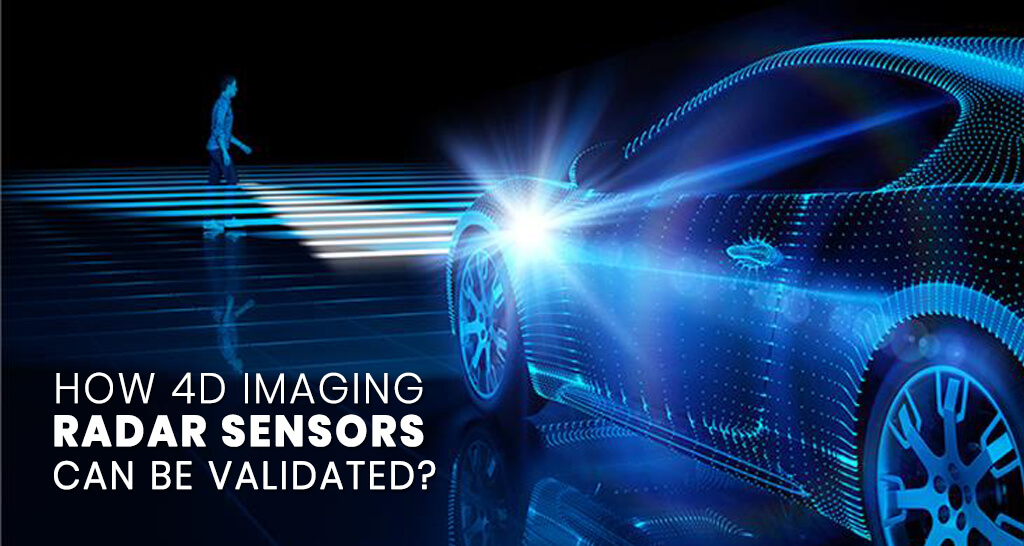The 4D imaging radar sensors are the modern technology available in all kinds of latest automated vehicles. This 4D imaging radar technology will help the vehicles to understand their surroundings and traffics to move accordingly. Using these kinds of modern technology in the latest automated vehicles provides many benefits for those machines. Similarly, it also helps to gain lots of potential benefits.
These kinds of radar sensors will have various abilities, and with the help of this technology, people can know the distance, speed, and direction of objects. But, all these are already available with 3D imaging radar technology. The latest 4D imaging radars will have the additional feature of knowing the objects’ height and elevation angle. So, this feature makes the radar sensor more effective and suitable for all users.
The validation process for 4D imaging radar sensor
The modern radar sensors will work between 76 and 81 GHz frequencies. So, people who need to validate this technology should use the high-frequency radar target simulator. According to current resources, people can find the latest radar target simulator with a total 5 GHz bandwidth which is more helpful. So, companies working with this latest high-end technology can use this product for better results.
Using the radar target simulator for this validation process will help to know about the working ability of the 4D imaging radar sensor. Similarly, it also helps to know about the radar’s capacity to analyze and gain information like height, distance, speed, and directions. The testing process will deal with all different radar classes, like short, long, and mid-range radars. The use of this text technology will help to validate the sensors effectively.
4D imaging radar sensors validation
The validation process will help to know about the working ability and accuracy of the radar. Similarly, it also helps the users to get various details about the 4D imaging radar sensors. In this validation process, all the radars will undergo testing to maintain perfection in 4D imaging.
Though several classes of radars are available along with hybrid radar, which can switch classes, using the radar target simulator will be more helpful for the validation process. In the validation process, the radar sender will emit radio frequency, and it reaches the receiver of the radar target simulator. Then the conversion of radio frequency to intermediate frequency will take place.
The delay in receiving the frequency will help calculate the distance, and the frequency will help to know the object’s speed. Similarly, the amplitude will help to know about the size of the object. After all these, it reaches the RF front end and changes into radio frequency to reach the radar.
Use case of 4D imaging radar sensors.
People aware of automated and guided vehicles will know about many technologies available with those machines. But, these 4D imaging radar sensors are the most essential technology among all of them. It’s because of the working abilities and benefits available with those technologies. If this technology is available in the car, people can study the surroundings and drive the car automatically according to the traffic without involving the driver.
The radar will collect all the signals and develop a 4D image that helps the car to move accordingly to avoid obstacles. Similarly, it helps vehicles make critical traffic decisions to make travel more comfortable and safe for the passengers. Other than automated vehicles, this technology has several other use cases. But, automated vehicles are the top machines that use their complete abilities for better user experience.
Why is it essential to validate the 4D imaging radar sensors?
The validation process will show the quality of the 4D imaging radar sensors and help to understand the working efficiency of the technology. Though various companies implement this technology in several automated vehicles, it is necessary to be concerned about their quality. Vehicles with less efficient 4D imaging radar technology can cause critical or significant damage to users.
So, all these things make it more important to follow the validation process to test the quality and working ability of the 4D imaging radar sensors. So, the validation process will simplify companies’ use of them on their automated vehicles to obtain maximum benefits.
Conclusion
All these are the details to know about validating 4D imaging radar sensors. Similarly, these details will educate people about the importance of this technology in modern automated vehicles. People who need to know about the working of automated cars and other vehicles should know about the 4D imaging radar technology and its validation processes. All these facts will be more helpful and help people understand the abilities of these technologies.



Discussion about this post